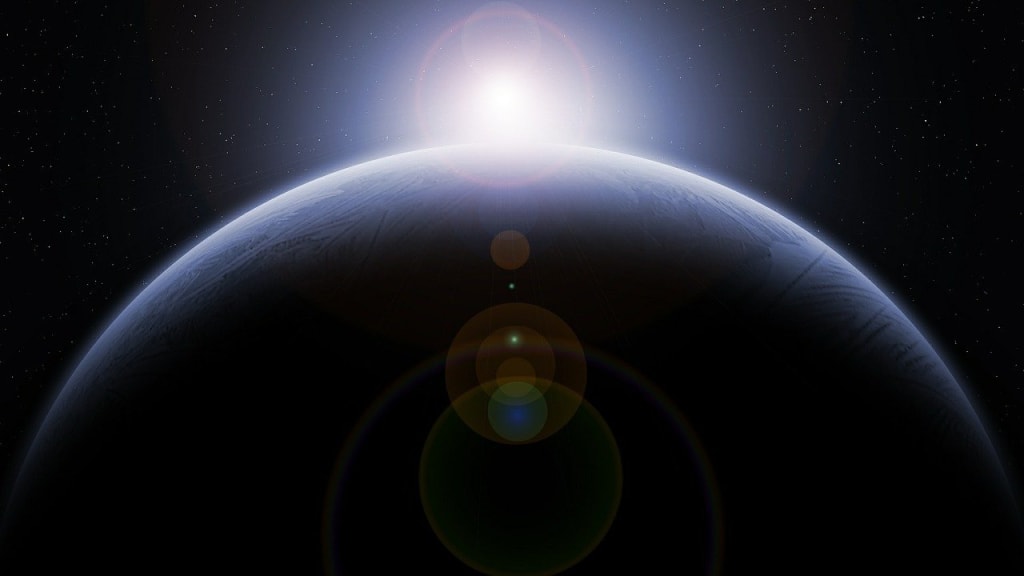Earth’s History: A Timeline of the Earth’s Life
let's explore our home planet timeline

Today, Earth is a dynamic, living planet. It has an atmosphere that cycles between carbon dioxide and oxygen levels, it has an ocean that teems with life, and it has the right temperature and gravitational pull to support life as we know it. But there was a time when our blue planet was very different. We know this because we can see the remnants of Earth’s earlier history in the geologic record. The story of our planet’s transformations is preserved in rocks and fossils, which provide clues about what happened billions of years ago. Understanding Earth’s past helps us understand our present and anticipate its future.
4.6-billion-year history of Earth:
The oldest rocks found on Earth are about 4.6 billion years old. At that time, the Solar System had only existed for about 100 million years and the Sun was about 70% as bright as it is now. Earth was part of a cloud of dust, gas and ice that surrounded the young Sun. Eventually, enough particles clumped together to form the planets, moons, asteroids and comets in our Solar System. We don’t know exactly how the planets in our Solar System formed. Evidence suggests that they formed very quickly, in less than 100 million years. Most scientists think that the planets formed from a rotating cloud of gas and dust that was orbiting the Sun. As this cloud collapsed, it formed a spinning disc. The dust in the disc clumped together to form small chunks called planetesimals.
Formation of the Earth:
The Earth formed from a giant clump of dust and gas that was rotating around the Sun in one of the spiral arms of the disc. As the Earth formed it got too close to the Sun and was thrown out of the disc. Once the Earth left the disc, it became a planet-sized object in space called a planet. As the Earth orbited the Sun it was getting hotter. If the Earth had stayed a clump of gas and dust, it would have melted and evaporated. Luckily for us, the clump of dust and gas that formed Earth contracted as it got hotter. This caused the Earth to cool off and become a solid sphere.
3.8 billion years of mostly rock:
After the Earth formed, it was mostly rock with very little water. It took 3.8 billion years of weathering the surface of the Earth to turn it into soil and sand. This process is called weathering and it is caused by wind, water, freezing and thawing, and the Sun’s rays. The first signs that life existed on Earth were found in South Africa and Australia. Scientists believe these 3.8 billion-year-old fossils were created by blue-green algae. These algae formed stromatolites, which are round, layered mounds. Stromatolites are still created today. The next big change in the Earth happened about 2.4 billion years ago. At this time, there was more oxygen in the atmosphere, and minerals in rocks were oxidized. This tells us that there were photosynthetic organisms on the Earth that produced and released oxygen. These organisms were cyanobacteria, also called blue-green algae.
800 million years of heavy meteorite bombardment:
About 800 million years ago, there was a sudden increase in the number of meteorites that hit the Earth. These meteorites were about 10 times more common than they are today. This was also the first time that large lakes formed on the surface of the Earth. This heavy meteorite bombardment was caused by a sudden change in the orbits of the planets in our Solar System. The gravitational pull of Jupiter and the other giant planets in our Solar System caused the smaller Earth to be pushed closer to the Sun. This made the Earth hotter, which melted the surface rock and created large lakes. This extreme heat from the heavy meteorite bombardment made the rocks and soil in the tropics turn to carbon dioxide. The large lakes in the tropics released so much CO2 into the atmosphere that it caused the planet to heat up and the oceans to turn to CO2. The hot, carbon dioxide atmosphere trapped the Sun’s energy on Earth, which caused the oceans to turn to CO2. The hot CO2 atmosphere and oceans created an excellent environment for the formation of coal and oil. The extreme heat also killed all life on Earth.
500 million years of tides and oceans:
About 500 million years ago, the extreme heat that caused the oceans to turn to CO2 ended, and the oceans started to evaporate. As the CO2 evaporated from the oceans, it cooled the planet. The cooler air allowed more water vapor to be absorbed into clouds. This water vapor created a strong greenhouse effect, like the one caused by CO2 in modern times. This greenhouse effect is what made life on Earth possible. The greenhouse effect trapped enough heat in the atmosphere and oceans to create stable temperatures and large bodies of water. This was the beginning of the Carboniferous Period. Most of the CO2 that caused the greenhouse effect was absorbed into the oceans. The extreme temperature changes caused by these large amounts of CO2 and water in the atmosphere changed the composition of minerals in rocks.
250 million years of dinosaurs and other animals:
About 250 million years ago, Earth went through another period of extreme CO2 and water levels in the atmosphere. During this time, the CO2 and water evaporated so quickly from the oceans that they formed a layer of CO2 and water vapor that covered the entire planet. The CO2 and water vapor that covered the planet made it too dark and too cold for photosynthesis. This caused all plants and algae to die, which caused all herbivores to die and all carnivores to be without food. These extreme CO2 and water levels are the reason we have dinosaur fossils. As the CO2 and water evaporated from the atmosphere, it rained down on the ground. The heavy rains created swamps, which buried the dead plants and animals. The extreme CO2 and water levels caused the rocks to be extremely acidic. This acid preserved the plants and animals that were buried in the swamps.
60 million years of climate instability:
About 60 million years ago, extreme CO2 and water vapor levels caused by another celestial event caused the dinosaurs to go extinct. The extremely high CO2 levels in the atmosphere caused the surrounding oceans to become too acidic for marine organisms. This extinction event was caused by the climate instability caused by the CO2 levels. The high CO2 levels caused the oceans to become too acidic to support marine life, and the high water levels caused the land to become too soggy to support animals and plants. This extinction event caused many species to go extinct, including the dinosaurs. Eventually, the Earth changed back to normal CO2 and water levels.
10 million years of humans:
There have been very few changes in the atmosphere since the dinosaur extinction event. That is, until about 10,000 years ago when humans started farming, burning wood and using coal to heat their homes and power their machines. These human activities created CO2 that was stored in the soil and in the oceans for millions of years. Human activities released the CO2 stored in the soil and oceans, which increased the CO2 levels in the atmosphere. CO2 levels increased from around 280 ppm before the Industrial Revolution to 410 ppm today.
Earth’s future and how to prepare:
Given that Earth’s history is full of extreme climate events caused by celestial changes, we can expect the future to be just as unpredictable. That doesn’t mean we’re powerless in the face of climate change, though. There are many things we can do to prepare for an uncertain future. The most important thing we can do as individuals is educate ourselves about climate change. Understanding the science of climate change and its effects on the planet will help us make better decisions to protect our future.
About the Creator
PP
Psychology, Horror, fiction, education, poet, and about many crazy topics; I love to create content.
Enjoyed the story? Support the Creator.
Subscribe for free to receive all their stories in your feed. You could also pledge your support or give them a one-off tip, letting them know you appreciate their work.






Comments
PP is not accepting comments at the moment
Want to show your support? Send them a one-off tip.